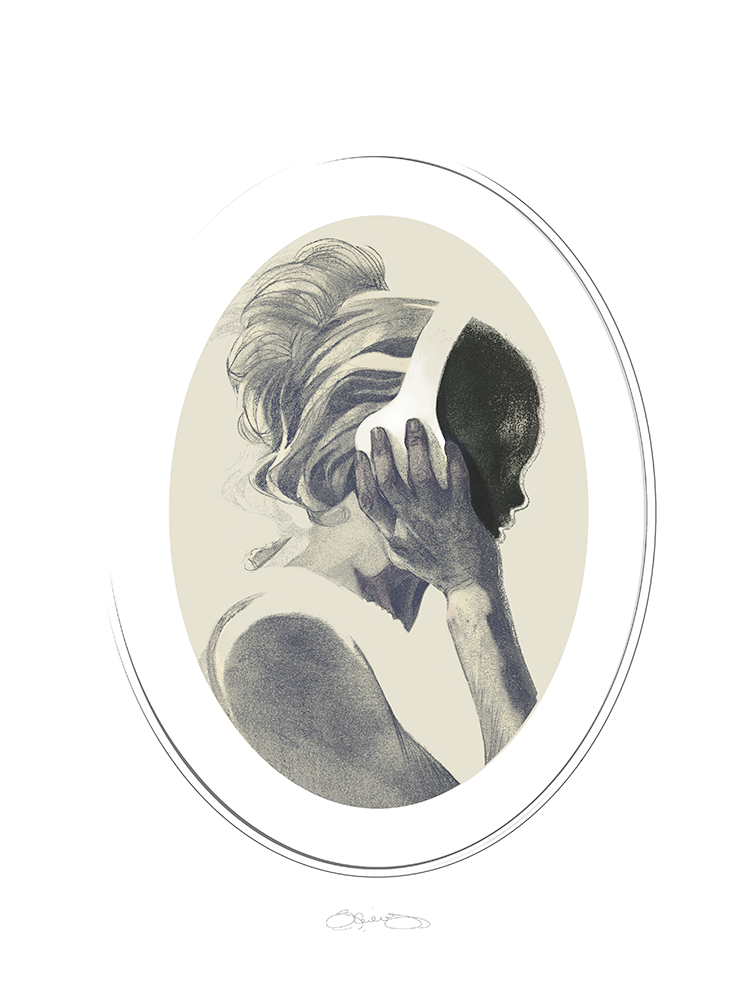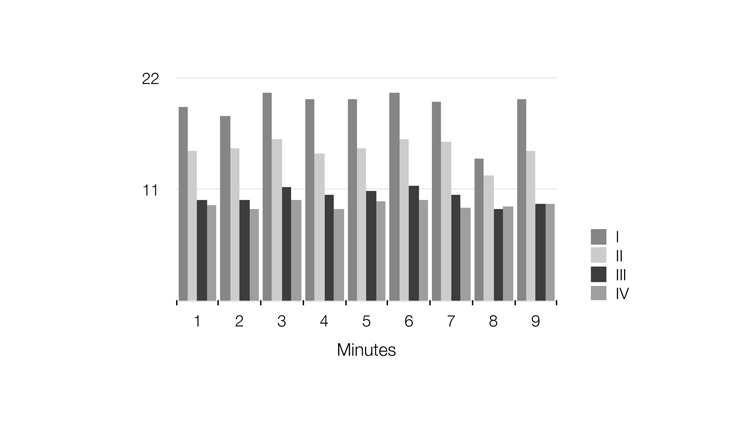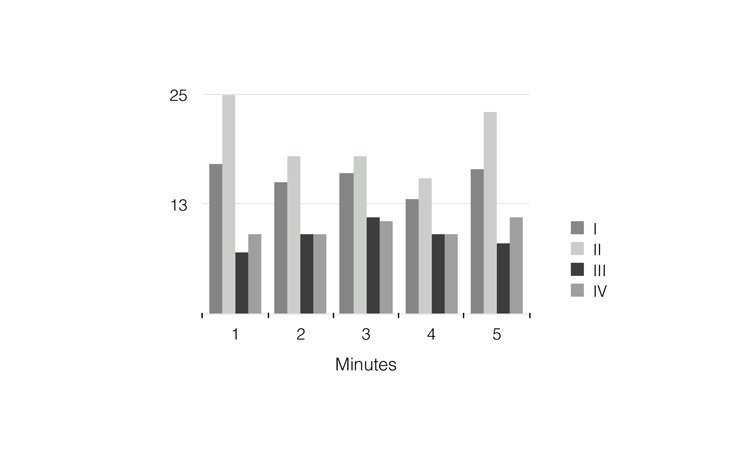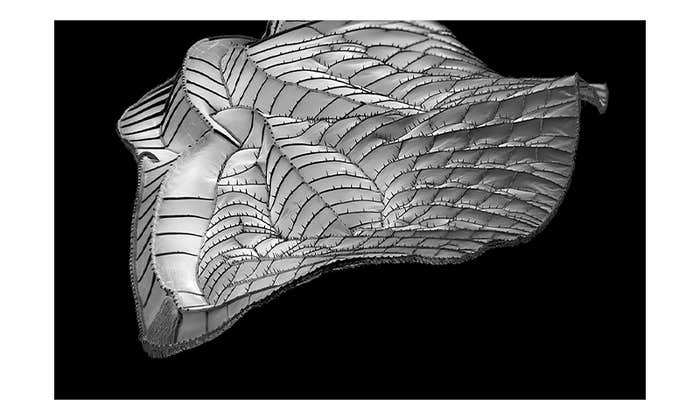One evening, some 40 years ago, I got lost in time. I was at a performance of Schubert’s String Quintet in C major. During the second movement I had the unnerving feeling that time was literally grinding to a halt. The sensation was powerful, visceral, overwhelming. It was a life-changing moment, or, as it felt at the time, a life-changing eon.
It has been my goal ever since to compose music that usurps the perceived flow of time and commandeers the sense of how time passes. Although I’ve learned to manipulate subjective time, I still stand in awe of Schubert’s unparalleled power. Nearly two centuries ago, the composer anticipated the neurological underpinnings of time perception that science has underscored in the past few decades.
The human brain, we have learned, adjusts and recalibrates temporal perception. Our ability to encode and decode sequential information, to integrate and segregate simultaneous signals, is fundamental to human survival. It allows us to find our place in, and navigate, our physical world. But music also demonstrates that time perception is inherently subjective—and an integral part of our lives. “For the time element in music is single,” wrote Thomas Mann in his novel, The Magic Mountain. “Into a section of mortal time music pours itself, thereby inexpressibly enhancing and ennobling what it fills.”

We conceive of time as a continuum, but we perceive it in discretized units—or, rather, as discretized units. It has long been held that, just as objective time is dictated by clocks, subjective time (barring external influences) aligns to physiological metronomes. Music creates discrete temporal units but ones that do not typically align with the discrete temporal units in which we measure time. Rather, music embodies (or, rather, is embodied within) a separate, quasi-independent concept of time, able to distort or negate “clock-time.” This other time creates a parallel temporal world in which we are prone to lose ourselves, or at least to lose all semblance of objective time.
In recent years, numerous studies have shown how music hijacks our relationship with everyday time. For instance, more drinks are sold in bars when with slow-tempo music, which seems to make the bar a more enjoyable environment, one in which patrons want to linger—and order another round.1 Similarly, consumers spend 38 percent more time in the grocery store when the background music is slow.2 Familiarity is also a factor. Shoppers perceive longer shopping times when they are familiar with the background music in the store, but actually spend more time shopping when the music is novel.3 Novel music is perceived as more pleasurable, making the time seem to pass quicker, and so shoppers stay in the stores longer than they may imagine.
Perhaps the clearest evidence of musical hijacking is this: In 2004, the Royal Automobile Club Foundation for Motoring deemed Wagner’s Ride of the Valkyrie the most dangerous music to listen to while driving. It is not so much the distraction, but the substitution of the frenzied tempo of the music that challenges drivers’ normal sense of speed—and the objective cue of the speedometer—and causes them to speed.
While music usurps our sensation of time, technology can play a role in altering music’s power to hijack our perception. The advent of audio recording not only changed the way music was disseminated, it changed time perception for generations. Thomas Edison’s cylinder recordings—heard below—held about four minutes of music.
This technological constraint set a standard that dictated the duration of popular music long after that constraint was surpassed.4 In fact, this average duration persists in popular music as the modus operandi today. This, in turn, influenced the way music of longer duration was heard. The implicit effect on the classical music industry was disastrous. To put it bluntly, the subjective perception of the length of time withered the collective attention span for listening to music.5
The Royal Automobile Club deemed Wagner’s Ride of the Valkyrie the most dangerous music to listen to while driving.
Neuroscience gives us insights into how music creates an alternate temporal universe. During periods of intense perceptual engagement, such as being enraptured by music, activity in the prefrontal cortex, which generally focuses on introspection, shuts down. The sensory cortex becomes the focal area of processing and the “self-related” cortex essentially switches off. As neuroscientist Ilan Goldberg describes, “the term ‘losing yourself’ receives here a clear neuronal correlate.” Rather than enabling perceptual awareness, the role of the self-related prefrontal cortex is reflective, evaluating the significance of the music to the self. However, during intense moments, when time seems to stop, or rather, not exist at all, a selfless, Zen-like state can occur.6
While the sublime sense of being lost in time is relatively rare, the distortion of perceived time is commonplace and routine. Broadly speaking, the brain processes timespans in two ways, one in which an explicit estimate is made regarding the duration of a particular stimulus—perhaps a sound or an ephemeral image—and the second, involving the implicit timespan between stimuli. These processes involve both memory and attention, which modulate the perception of time passing, depending upon how occupied or stimulated we are. Hence time can “fly” when we are occupied, or seem to stand still when we are waiting for the water in the kettle to boil. Unlike the literal loss of “self” that occurs during intense perceptual engagement, the subjective perception of elongated or compressed time is related to self-referential processing. An object—whether image or sound—moving toward you is perceived as longer in duration than the same object that is not moving, or that is receding from you. A looming or receding object triggers increased activation in the anterior insula and anterior cingulate cortices—areas important for subjective awareness.
The directionality of musical melody and gesture evoke similar percepts of temporal dilation. The goal-oriented nature of music provides a framework in which a sense of motion is transposed to sonic structures, and the sensation of “looming” and “receding” can be simulated independently of relative spatial orientation. The subjectivity of time perception can be grounding and self-affirming—a source of great pleasure, or, conversely, able to create a state of disassociation with one’s self—a state of transcendence.7
Time can “fly” when we are occupied, or seem to stand still when we are waiting for the water in the kettle to boil.
Considering the composer’s goal of distorting time perception, musical time is notated with remarkable imprecision and ambiguity. Composers, more often than not, rely upon qualitative rather than quantitative directives to inform performers of intended tempo. And if the vagaries of such terms as Adagietto (somewhat slow), or Lentissimo (slower than slow) are not ambiguous enough, terms such as Allegro ma non troppo (fast, but not too fast), or terms that connote speed through emotion such as Allegro appassionato, Bravura, or Agitato, or terms that confuse complexity with speed, such as Tempo semplice, oblige the performer to imagine temporality from the composer’s perspective through guesswork. My favorite temporal marking is the term Tempo rubato, literally “stolen time,” in which duration is added to one event at the expense of another. Long after German inventor Johann Maelzel patented the metronome in 1815, composers continued to persistently avoid strict measures of time in their scores, instead relying primarily on adjectival description.
While the manipulation of perceptual time is a pervasive aspect of music, particular composers, including Anton Bruckner, famous for his hour-plus symphonies, and Olivier Messiaen, took the warping of subjective time to extremes. Anton Webern even fooled himself, grossly overestimating the duration of his own 7-minute-long Variations for Orchestra as lasting 20 minutes!
But it is Schubert, more than any other composer, who succeeded in radically commandeering temporal perception. Nowhere is this powerful control of time perception more forceful than in the String Quintet. Schubert composed the four-movement work in 1828, during the feverish last two months of his life. (He died at age 31.) In the work, he turns contrasting distortions of perceptual time into musical structure. Following the opening melody in the first Allegro ma non troppo movement, the second Adagio movement seems to move slowly and be far longer than it really is, then hastens and shortens before returning to a perception of long and slow. The Scherzo that follows reverses the pattern, creating the perception of brevity and speed, followed by a section that feels longer and slower, before returning to a percept of short and fast. The conflict of objective and subjective time is so forcefully felt in the work that it ultimately becomes unified in terms of structural organization.
The following is an audio tour through key moments in the work, demonstrating the extraordinary degree to which Schubert masterfully manipulates subjective time.
From the outset, the opening melody stutters against a motionless drone. It is a single note repeated five times, venturing to a lone new tone and settling back from where it came in an eerie aura of aimless meandering and stasis.
This long-short-long rhythmic pattern obsessively permeates the opening section. Each time the motive repeats, the pitch repetition, resistant to change, hesitatingly reaches outward. It is as if the motive is trying to liberate itself from its static state, yet uncommitted to a clear path. This struggle to move occurs against a laboriously slow and unwaveringly steady harmonic progression.
The nearly static opening section of the second movement ends with an exquisite shock by another pitch repetition, but this time with the harmonic underpinning shifting abruptly, as if we are thrust through an open door into a new world.
This is technically referred to as an enharmonic pivot—in which a musical pitch with a specific function is redefined—renamed and re-contextualized. Here, G sharp, the third degree of E major, becomes A flat, the third degree of the distantly related key, F minor.
This change triggers a shift of mode and a new thrust of forward motion, set by activation in the accompaniment. Time hastens with a forward thrust, created by literally reversing the two characteristic attributes of the opening pattern. Instead of the opening long-short-long, the pattern is now short-long-short, and the change of pitch that was attempting, almost in vain, to break free at the end of the pattern, is now front-ended, and catapults the melody into motion while the repeated note, before a stutter, no longer resists motion but rather adds to the forward thrust. If time was gasping for life, it is now suddenly, breathlessly energetic.
The new melody in the middle section aggressively probes the future. Yet while its energetic accompaniment seems faster and shorter than the opening, it is, in fact exactly equal in duration: the same number of measures, same number of beats, even the same rate of harmonic change. The section grinds to a halt, introducing the recapitulation of the opening, this time adding a more ornamented line and counterpoint that seems, with only limited success, to keep the music from returning to temporal stasis.
Schubert effectively tricks us into perceiving a timespan far more expansive than registered by a stopwatch.8 Within this illusion of stretched time, he embeds another illusion, of a considerably faster and shorter section sandwiched between slow and virtually motionless music, when, in fact, by the metronome and the clock, all three sections are of equal length.
The third movement, Scherzo, which follows the slow Adagio, stands in temporal and rhythmic opposition to its predecessor. Here again, there are three sections. A fast opening,
followed by a middle section in stark contrast to the opening, and the recapitulation of the opening.
In opposition to the subjective long-short-long sections of the Adagio, the perceived timespans here are fast-slow-fast (or short-long-short). The energetic outer sections grind to a near halt with the middle section. Here again, not only is perceptual time manipulated, but the temporal warping is the very underpinning of the overall musical structure. Just as the perceived distorted time of the Adagio was a reflection of the long-short-long surface rhythm of the Adagio, so the short-long-short surface rhythm of the Scherzo mirrors the perceived time of the movement.
Even though I attended my first concert of the String Quintet 40 years ago, I am still overcome by its powers. The slow second movement persistently puts me on the verge of a sense of temporal stasis. I feel submerged in a viscous medium—not at all struggling to move forward, but rather fully absorbed in an alternate temporal universe. Although immersed in the music, I am aware of time in the external world. I tend to breathe along with phrases, and find myself coming up short of breath. Remarkably, this sensation is relived each time I listen to the String Quintet. Like all music that feels both part of time and beyond it, the String Quintet seems to connect us to something bigger than ourselves—in the words of Schubert’s friend and collaborator, the poet Franz von Schober, “time’s infinite ocean.”
Jonathan Berger is the Denning Family Provostial Professor in Music at Stanford University, where he teaches composition, music theory, and cognition at the Center for Computer Research in Music and Acoustics. His most recent recording is Jiyeh, a violin concerto.
Footnotes
1. Down, S. J., The effect of tempo of background music on duration of stay and spending in a bar. Thesis, University of Jyväskylä (2009).
2. Milliman, R. E., Using Background Music to Affect the Behavior of Supermarket Shoppers. Journal of Marketing (1982).
3. Yalch, R. F. & Spangenberg, E. The Effects of Music in a Retail Setting on Real and Perceived Shopping Times. Journal of Business Research (2000).
4. The capacity of the first audio CDs (about 73 minutes) was, by all accounts, set by Sony President Norio Ohga’s desire to hold the entirety of Beethoven’s 9th Symphony on a single disc.
5. In fact, despite the ability to fit longer works on 45s and LPs, the average duration of songs continued to decline through the 1950s.
6. Goldberg II, H. M, & Malach R., When the brain loses its self: Prefrontal inactivation during sensorimotor processing. Neuron (2006).
7. Wittmann, M, van Wassenhove, V, Craig, A.D., & Paulus, Martin P., The neural substrates of subjective time dilation. Frontiers of Human Neuroscience (2010).
8. The warping of perceptual time in the String Quintet is even shared by professional musicians, who have played the work many times. This is illustrated by the charts below, created by Jonathan Berger. The first chart shows the length of each movement in nine different recordings of the work. The second chart shows the estimated time of each movement by the performers.


Music files courtesy of the Chamber Music Society of Lincoln Center
Publisher: Boston: Isabella Stewart Gardner Museum



























